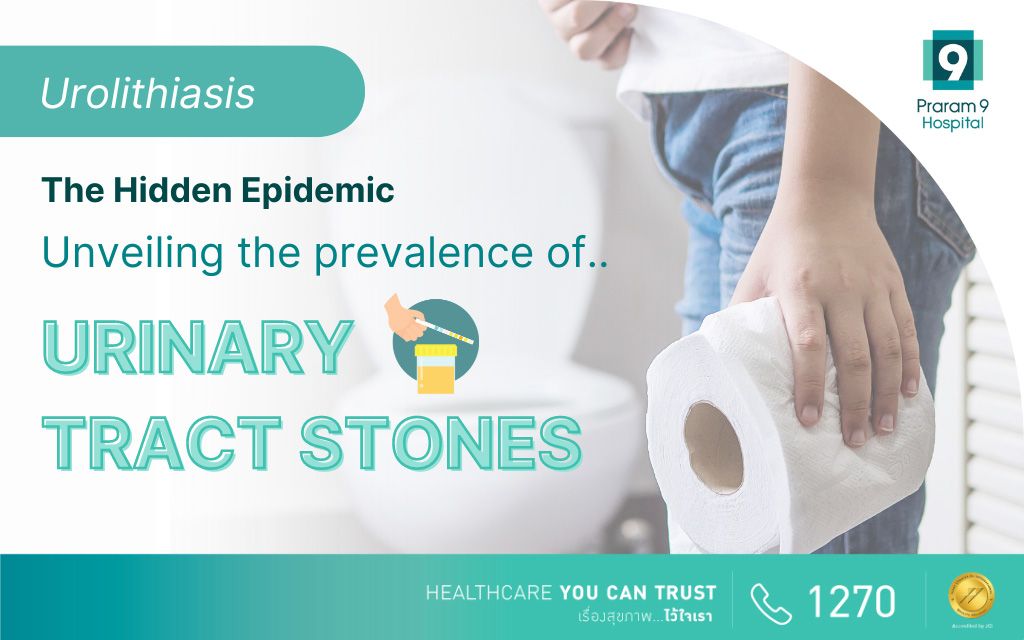Health Articles
Knowledge
Unveiling the Prevalence of Urinary Tract Stones

Urinary tract stones, also known as urolithiasis or kidney stones, are a prevalent urological condition that affects millions of people globally. This comprehensive article aims to provide you for understanding of urinary tract stones, including their causes, symptoms, diagnostic methods, and various treatment options.
What Are Urinary Tract Stones?
Urinary tract stones are solid crystalline structures that form within the urinary system, which includes the kidneys, ureters, urinary bladder, and urethra. These stones can vary in size and composition, ranging from tiny to large size like golf ball-sized structures.
Causes of Urinary Tract Stones
Urinary tract stones can develop from various reasons. The most common types of urinary stones are:
- Calcium Stones: These are the most prevalent and typically consist of calcium oxalate. High levels of calcium in the urine and oxalate-rich foods can contribute to their formation.
- Struvite Stones: Struvite stones often from urinary tract infections. They can grow rapidly and may block the urinary tract.
- Uric Acid Stones: Uric acid stones form when there is an excess of uric acid in the urine, which can occur due to diet, genetics, or certain medical conditions like gout.
- Cystine Stones: Cystine stones are rare and develop in individuals with a genetic disorder called cystinuria, causing an abnormal buildup of cystine in the urine.
Risk Factors of Urinary Tract Stones
Numerous factors increase the risk of developing urinary tract stones, including:
- Dehydration: Insufficient fluid intake can lead to concentrated urine, increasing the risk of stone formation.
- Diet: A diet which contains oxalate-rich foods, such as spinach, beets, and nuts, can raise the risk of calcium oxalate stones.
- Family History: A family history of urinary tract stones can increase your susceptibility to the condition.
- Obesity: Excess body weight can increase the risk of stone formation.
- Certain Medical Conditions: Conditions like gout and inflammatory bowel disease can raise the risk of uric acid stones.
Symptoms of Urinary Tract Stones
The presence of urinary tract stones can cause various symptoms, including:
- Severe Pain: One of the hallmark symptoms is intense, cramping pain in the lower back, side, or lower abdomen.
- Hematuria: Blood in the urine, often visible as pink, red, or brown urine.
- Frequent Urination: The need to urinate more frequently, often accompanied by a sense of urgency.
- Painful Urination: Discomfort or a burning sensation while urinating.
- Nausea and Vomiting: Stones can lead to nausea and vomiting, particularly when they cause severe pain.
Diagnosis of Urinary Tract Stones
To diagnose urinary tract stones, healthcare providers may employ various methods, including:
- Imaging Tests: These include CT scans, ultrasound, and X-rays to visualize the stones and their location in the urinary tract.
- Urinalysis: This involves analyzing a urine sample to detect early signs of stone-related issues, such as blood or crystals in the urine.
- Blood Tests: Blood tests can assess kidney function and identify any abnormalities that may be linked to stone formation.
Treatment Options of Urinary Tract Stones
The treatment approach for urinary tract stones depends on the size, location, and composition of the stones. Common treatment methods include:
- Observe Treatment: Smaller stones that are not causing symptoms may pass on their own. Healthcare providers may recommend pain management and increased fluid intake during this period.
- Medications: Medications like alpha-blockers can help relax the ureters, facilitating stone passage. Additionally, specific medications may be prescribed to manage underlying conditions that contribute to stone formation.
- Minimally Invasive Procedures: For larger or stubborn stones, minimally invasive procedures like extracorporeal shock wave lithotripsy (ESWL), ureteroscopy, and percutaneous nephrolithotomy (PCNL) may be used to break up or remove the stones.
- Surgery: Surgical intervention may be necessary for very large or complicated stones. In these cases, open surgery or laparoscopic procedures may be performed to remove the stones.
Prevention of Urinary Tract Stones
Preventing the recurrence of urinary tract stones is crucial. Some preventive measures include:
- Staying well-hydrated by drinking an adequate amount of water daily.
- Reducing the consumption of oxalate-rich foods.
- Moderating salt intake.
- Adjusting your diet to avoid excessive intake of calcium or purine-rich foods.
- Following prescribed medications and dietary guidelines if you have underlying medical conditions contributing to stone formation.
Conclusion
Urinary tract stones can be a painful and disruptive condition, but understanding their causes, symptoms, diagnosis, and treatment options is essential. If you suspect you have urinary tract stones or are experiencing any symptoms, it’s vital to seek prompt medical evaluation and guidance from a healthcare professional.
Remember, the information provided here is for educational purposes only. For personalized medical advice and treatment options, consult a qualified healthcare provider. Understanding urinary tract stones and their management is a crucial step toward maintaining your urinary health and overall well-being.
Make Appointment
- Call : 1270 or +662 202 9999
- Facebook : Praram 9 Hospital International & Expats
- Email : [email protected]
- Praram 9 V Telemedicine














